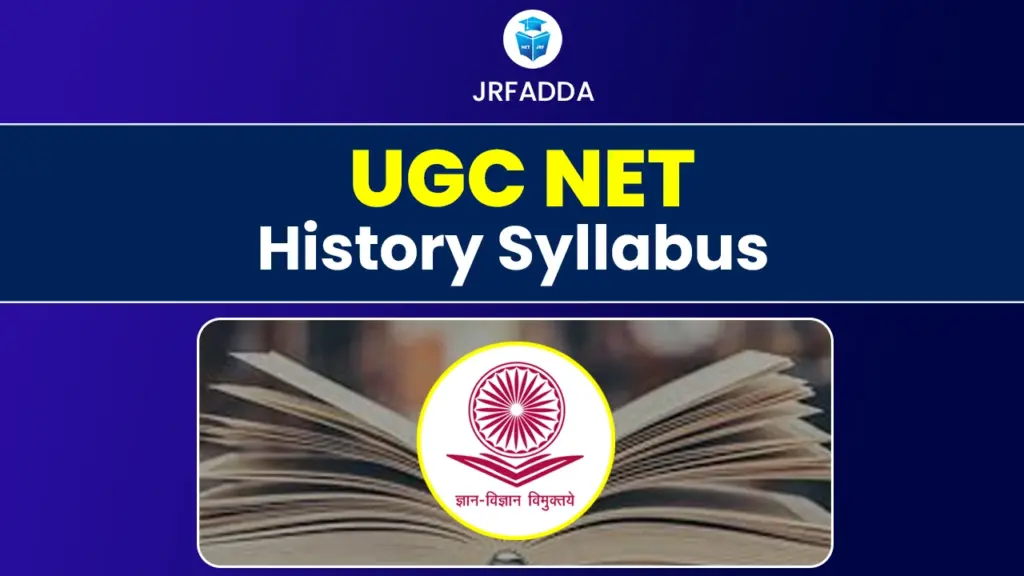The Varna system played a crucial role in shaping ancient Indian society. Initially, it was based on duties and professions, but over time, it evolved into a rigid caste hierarchy. This article explores its origins, structure, transformation, and impact, which are essential topics for UGC NET aspirants.
Origins and Meaning of Varna A Key UGC NET Topic
The Varna system dates back to the Vedic period (around 1500 BCE) and was originally meant to classify people based on their work rather than birth. The Sanskrit word “Varna” means “to classify” or “to cover”, and while some early scholars associated it with skin color, modern research has dismissed this theory.
The first mention of the Varna system appears in the Rig Veda’s Purusha Sukta, where society is compared to a human body:
- Brahmins (Priests & Scholars) – Came from the head, symbolizing wisdom.
- Kshatriyas (Warriors & Rulers) – Came from the arms, symbolizing strength.
- Vaishyas (Merchants & Traders) – Came from the thighs, symbolizing support.
- Shudras (Laborers & Artisans) – Came from the feet, symbolizing service.
In the beginning, social mobility was possible. People could move between groups based on skills and achievements. However, with time, this flexibility disappeared, making the system rigid.
Main Categories of the Varna System UGC NET Social Structure
The Varna system divided society into four major groups, each with distinct responsibilities.
1. Brahmins: Guardians of Knowledge
- Roles: Priests, scholars, and teachers.
- Duties: Performing religious rituals, preserving sacred texts, and advising rulers.
- Social Status: The highest Varna, respected for their intellectual and spiritual leadership.
2. Kshatriyas: Warriors and Leaders of Society
- Roles: Kings, soldiers, and administrators.
- Duties: Protecting the kingdom, maintaining law and order, and leading in battles.
- Social Status: The second tier, valued for their leadership and defense of society.
3. Vaishyas: The Economic Backbone
- Roles: Farmers, traders, and businesspeople.
- Duties: Managing agriculture, trade, and commerce to sustain economic growth.
- Social Status: The third tier, essential for wealth creation and economic stability.
4. Shudras: The Pillars of Service
- Roles: Laborers, craftsmen, and service providers.
- Duties: Supporting other Varnas through skilled and manual labor.
- Social Status: The lowest tier, often denied educational and religious privileges.
Outside this structure were the Avarnas (Dalits and Tribals), who faced severe discrimination and social exclusion.
Transition from Varna to Caste System UGC NET Perspective
Over time, the Varna system evolved into the caste system, which became hereditary and rigid. Several factors contributed to this shift:
| Factor | Impact on Social Structure |
| Religious Texts | Manusmriti reinforced birth-based Varna divisions. |
| Jāti System | Small occupational groups (Jātis) replaced the broad Varna system, making professions hereditary. |
| Colonial Rule | The British formalized caste categories for administration, solidifying divisions. |
| Social Customs | Inter-caste mobility reduced, and restrictions on marriage, dining, and work became stricter. |
The caste system introduced untouchability, where Dalits were denied basic rights, access to temples, and even common water sources.
Criticism and Evolution of the Varna System UGC NET Insights
Challenges and Reforms
Several religions and social movements opposed caste discrimination:
- Buddhism & Jainism rejected caste-based distinctions and promoted equality.
- Bhakti & Sufi Movements emphasized devotion and human unity over caste divisions.
- Reformers like Raja Ram Mohan Roy & Ambedkar actively fought against caste-based oppression.
Modern Changes and Legal Reforms
In contemporary India, caste-based discrimination is illegal, and affirmative action policies (reservations) help marginalized communities in education and employment.
Other factors reducing caste barriers include:
- Urbanization & Industrialization – Mixed workplaces and cities weaken caste boundaries.
- Education & Awareness – Social movements promote equality and discourage caste-based bias.
- Legal Protection – The Indian Constitution bans caste-based discrimination under Article 15 & 17.
The Varna system started as a flexible structure but became rigid over time, leading to the caste system that deeply influenced Indian society. While modern reforms have challenged caste-based discrimination, some social barriers still persist. Understanding this transition is crucial for UGC NET aspirants, as it connects to history, sociology, and contemporary social issues.
Jati System and Social Hierarchies UGC NET Perspective
The Jati system evolved from the Varna framework, deeply shaping India’s social and economic structures through occupational specialization, hereditary hierarchies, and endogamy (marriage within the same community). While some Jatis adapted to changing socio-economic conditions, others remained trapped in rigid caste-based discrimination. This article explores the development, impact, and modern relevance of the Jati system, a crucial topic for UGC NET aspirants.
Development of Jatis and Social Restrictions UGC NET Analysis
Origins: Evolution from Varna to Jati
The Jati system began as localized occupational subgroups within the four Varnas. Unlike the rigid Varna structure, Jati identities were initially flexible and region-specific.
- Example: The Jats, originally pastoralists in Sindh, later transitioned into agrarian communities in Punjab and the Gangetic Plain. Depending on regional influences, they adopted Hinduism, Islam, or Sikhism, showcasing the fluidity of Jati identities.
- Specialization: Various Jatis developed specific roles, such as the Banias (merchants), Kumhars (potters), and Teli (oil traders).
Colonial Influence The British Role in Codifying Jatis
During British rule, Jati distinctions were officially classified in census records and administrative policies, making them hereditary and rigid.
| Colonial Impact | Effects on Society |
| Codification in Census (1871) | Fixed occupational identities, reducing mobility |
| Caste-based Reservations in Jobs | Reinforced caste divisions instead of removing them |
| Prohibitions on Inter-Caste Dining & Marriage | Strengthened endogamy, making Jati divisions more rigid |
This formalization deepened social barriers, preventing inter-caste interactions and limiting opportunities for marginalized communities.
Impact of Jati System on Education and Occupation UGC NET Insights
Educational Barriers Unequal Access to Learning
Despite government initiatives like reservations for Scheduled Castes (SCs) and Other Backward Classes (OBCs), educational inequalities persist.
| Category | Higher Education Enrollment (%) |
| Upper Castes | 33% |
| Scheduled Castes (SCs) | 21% |
| Scheduled Tribes (STs) | 15% |
Caste-based discrimination still exists in schools and colleges, affecting students’ mental health and academic growth.- Dalits and OBCs often struggle with poor access to quality institutions and limited financial resources.
Occupational Segregation Traditional Roles and Modern Realities
Caste-based occupational divisions continue, though some communities have broken barriers.
- Jats (Agriculture & Politics): Traditionally agrarian, they leveraged landownership to enter politics and urban businesses.
- Brahmins (Academia & IT): Many still dominate teaching, research, and the tech industry due to historical educational advantages.
- Dalits (Manual Labor & Sanitation): Overrepresented in sanitation and menial jobs due to historical stigma.
Example: In Punjab, Jat Sikhs dominate agriculture, while Dalits remain landless laborers, highlighting persistent caste-based economic gaps.
Economic Inequality and Social Mobility UGC NET Perspectives
Persistent Disparities in Wealth and Employment
Economic inequality remains high between upper castes and marginalized communities.
| Indicator | Upper Castes | Scheduled Castes (SCs) |
| Rural Literacy Rate | 72% | 57% |
| Urban Workforce in White-Collar Jobs | 28% | 12% |
| Corporate Executives (SCs) | – | Only 4% |
Post-independence reforms helped Dalits and OBCs enter government jobs, but private sector mobility is still limited.- Caste networks benefit dominant groups. Jat agricultural cooperatives in Haryana have improved credit access, while Dalit entrepreneurs face discrimination in business.
Contemporary Dynamics The Jati System in Modern India – UGC NET Relevance
Globalization and Economic Growth: A Double-Edged Sword
Modern economic changes have both reduced and reinforced caste barriers.
- Positive Impact: Urban migration and corporate jobs allow some marginalized groups to rise economically.
- Negative Impact: Caste-based business networks still favor dominant groups, limiting credit and market access for Dalit entrepreneurs.
Example:
- Jats in Delhi have moved from farming to the transport industry, showing economic adaptability.
- Dalits in business still face caste-based barriers, preventing them from competing fairly in many industries.
Policy Challenges Balancing Caste and Class-Based Affirmative Action
In 2019, India introduced reservations for economically weaker upper castes (EWS). This led to concerns about dilution of benefits for historically marginalized groups.
| Policy Change | Impact |
| EWS Reservation (10%) | Created tension between caste-based and class-based quotas |
| SC/ST & OBC Reservations | Still face issues due to poor implementation |
| Private Sector Discrimination | No reservation policies, limiting Dalit representation |
While education and economic policies have opened opportunities, rural India and informal sectors still experience caste-based inequalities.
Conclusion
The Varna and Jati systems played a fundamental role in shaping India’s social and economic structures. While the Varna system initially allowed social mobility, it later evolved into the rigid caste system, leading to widespread discrimination and inequality. Colonial policies further solidified caste divisions, making mobility even more challenging. However, modern legal reforms, urbanization, and economic changes have helped reduce some caste barriers. Despite progress, caste-based inequalities persist, making this topic highly relevant for UGC NET aspirants studying Indian society, history, and social structures.
Varna System and Social Stratification FAQs
What is the main difference between the Varna and Jati systems?
The Varna system was a broad classification based on occupation, while the Jati system consisted of smaller, hereditary occupational subgroups within the Varna hierarchy.
How did British colonial rule impact the caste system?
The British codified caste distinctions through census records and administrative policies, making them rigid and hereditary, which reinforced caste-based discrimination.
What role did social reformers play in challenging caste discrimination?
Reformers like Raja Ram Mohan Roy and Dr. B.R. Ambedkar fought against caste-based oppression through legal advocacy, education, and social movements.
How has urbanization affected caste-based discrimination?
Urbanization has weakened caste barriers by promoting inter-caste interactions in workplaces and educational institutions, but discrimination still exists in various forms.
What legal protections exist against caste discrimination in India?
The Indian Constitution bans caste-based discrimination under Articles 15 and 17, and affirmative action policies provide reservations for marginalized communities in education and employment.














